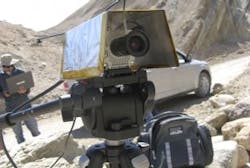NASA smart camera system recognizes planetary texture
Scientists at NASA’s Jet Propulsion Laboratory (JPL) have developed a camera system for rovers capable of capturing images of alien rocks and surfaces and analyzing them to determine whether or not the rover should keep exploring a particular area.
The system, which is called TextureCam, snaps 3D images using stereo cameras and a special processor uses the size and distance to rocks in the image to recognize texture and decide if there is anything of scientific importance in the photos, according to the American Geophysical Union (AGU).
As it stands now, scientists on Earth must upload an agenda to a Mars rover at the beginning of the Martian day. This itinerary outlines the rover’s movements and actions, and even though these instructions are transmitted at the speed of light, it still takes approximately 20 minutes to reach Mars. As a result, real-time control of the Mars Curiosity rover is impossible.
The Curiosity’s agenda is based on the images it sent back to Earth the previous day, which transmit at a pace slower than a 3G cell phone network connection.
"Right now for the rovers, each day is planned out on Earth based on the images the rover took the previous day," said senior researcher Kiri Wagstaff, a computer scientist and geologist at the JPLin the press release. "This is a huge limitation and one of the main bottlenecks for exploration with these spacecraft."
With the TextureCam, rovers may be able to send back more pertinent images without waiting for these instructions, which could have a greater impact on the efficiency and overall success of the mission.
"If the rover itself could prioritize what's scientifically important, it would suddenly have the capability to take more images than it knows it can send back. That goes hand in hand with its ability to discover new things that weren't anticipated," she said.
View the AGU article.
View the research paper.
Also check out:
NASA releases image of Saturn's view of Earth
Japanese rocket to use extreme UV spectroscopy to determine why some planets lose gases
e2v to develop imaging sub-system for World Space Observatory - Ultraviolet telescope
Share your vision-related news by contacting James Carroll, Senior Web Editor, Vision Systems Design
To receive news like this in your inbox, click here.
Join our LinkedIn group | Like us on Facebook | Follow us on Twitter
About the Author

James Carroll
Former VSD Editor James Carroll joined the team 2013. Carroll covered machine vision and imaging from numerous angles, including application stories, industry news, market updates, and new products. In addition to writing and editing articles, Carroll managed the Innovators Awards program and webcasts.
